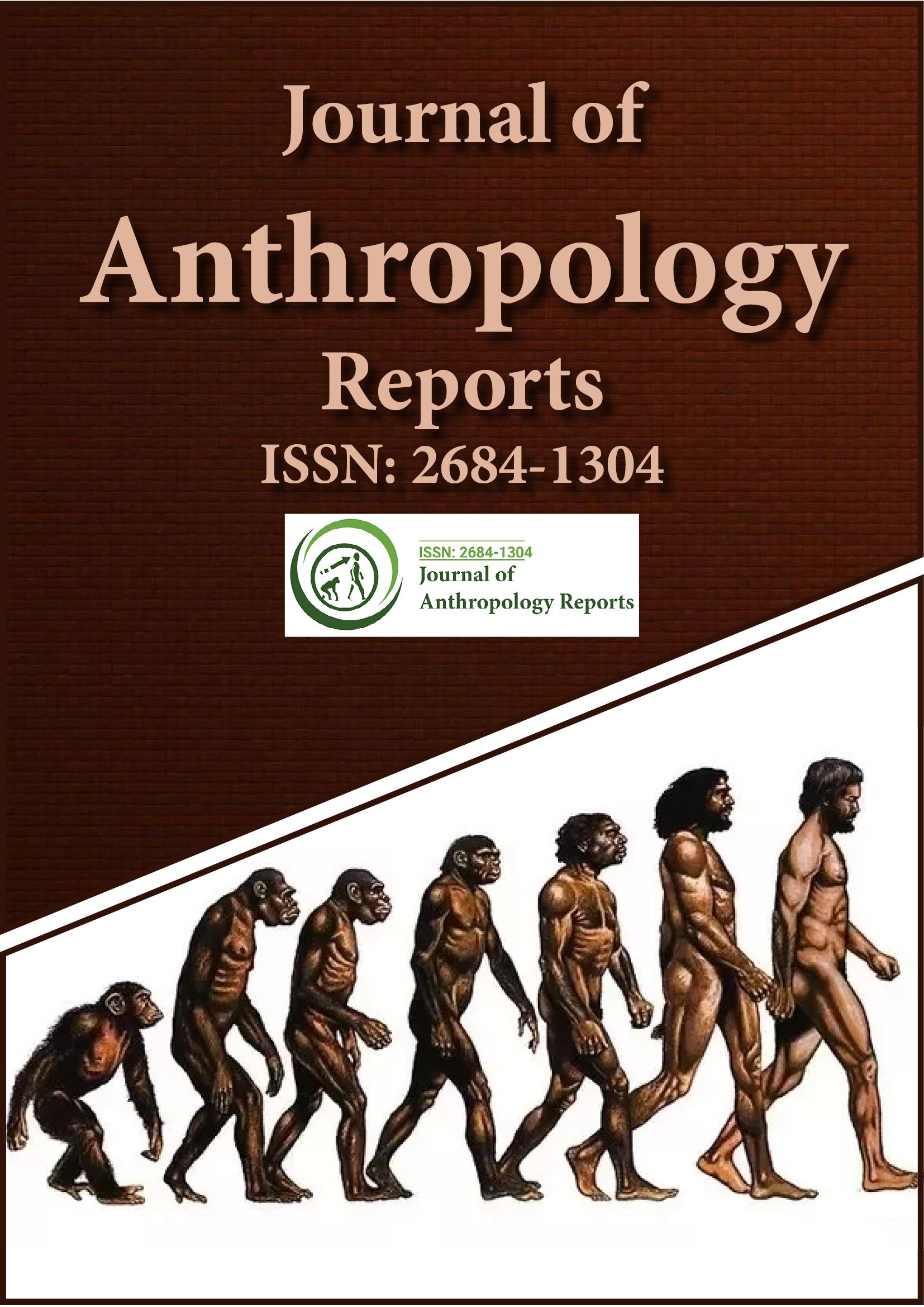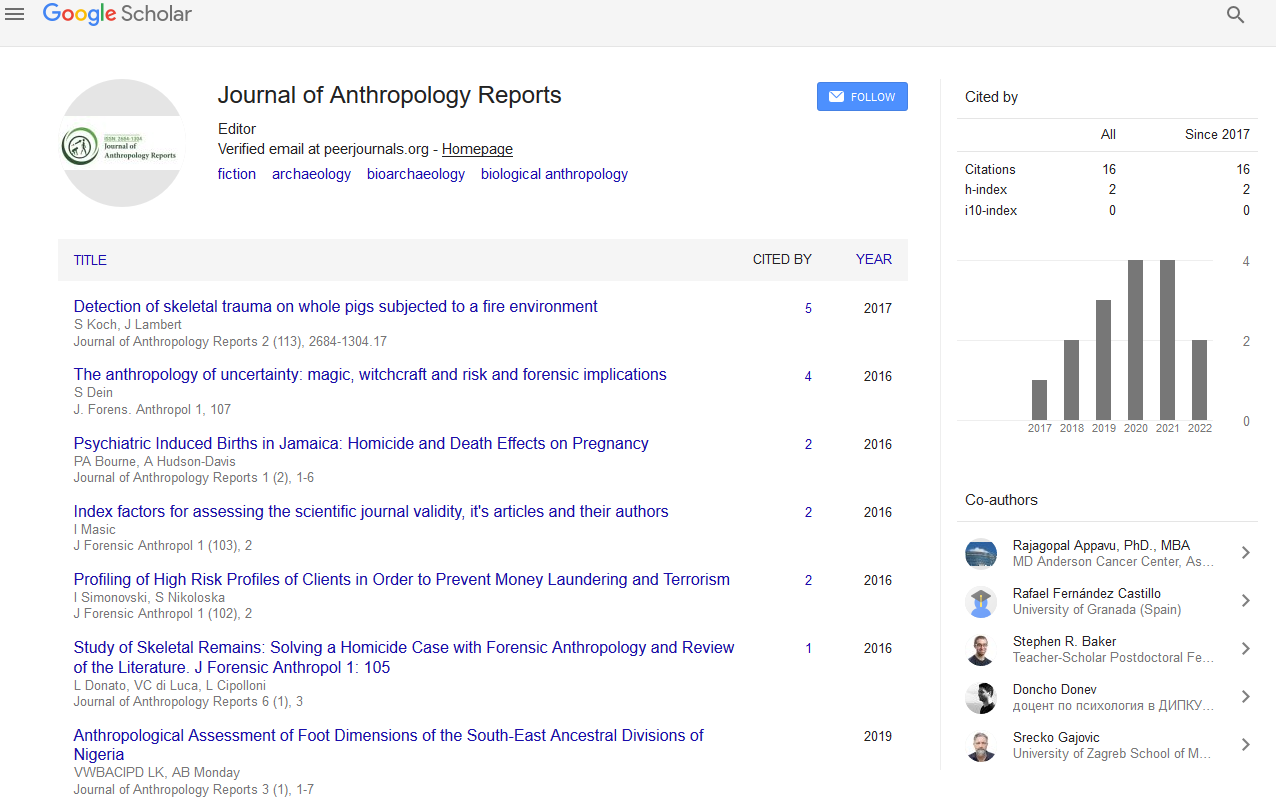Indexed In
- RefSeek
- Hamdard University
- EBSCO A-Z
Useful Links
Share This Page
Journal Flyer

Open Access Journals
- Agri and Aquaculture
- Biochemistry
- Bioinformatics & Systems Biology
- Business & Management
- Chemistry
- Clinical Sciences
- Engineering
- Food & Nutrition
- General Science
- Genetics & Molecular Biology
- Immunology & Microbiology
- Medical Sciences
- Neuroscience & Psychology
- Nursing & Health Care
- Pharmaceutical Sciences
Commentary Article - (2024) Volume 7, Issue 1
Social Relationship and Its Psychological Stress
Fabio Hernandez*Received: 06-Mar-2024, Manuscript No. JFA-24-25359; Editor assigned: 08-Mar-2024, Pre QC No. JFA-24-25359 (PQ); Reviewed: 22-Mar-2024, QC No. JFA-24-25359 (QC); Revised: 29-Mar-2024, Manuscript No. JFA-24-25359 (R); Published: 05-Apr-2024, DOI: 10.35248/2684-1304.24.7.191
Description
Social relations are extensively characterized as any relationship or communication between at least two people. Interest in social relationships and resulting support started 100 years back when the French sociologist Emile Durkheim proposed that disturbances in informal communities could impact mental wellbeing. Thus, hypothetical models have appear that conceptualize social help as a complex build. Models normally incorporate the ideas of social joining, or level of contribution in connections, like marriage or gathering participation, and the close to home, unmistakable, or commonsense help from others that fill a useful need. A singular's affirmation or satisfaction of social jobs may usefully impact confidence and give a feeling of significance or controllability to life. It is equal important to think about the opposite, or social struggle, as there are significant outcomes to close to home and actual wellbeing for the socially secluded individual, one who needs friendly associations, or those for whom connections act as a wellspring of stress.
A generally acknowledged perspective on mental pressure characterizes it as the examination of an occasion as straining or overpowering one's assets. This hypothesis previously suggested that examination of an occasion as undermining or exceptional one's assets actuates physiological pressure reaction frameworks in the body, including the autonomic (survival) framework and Hypothalamic Pituitary Adrenal (HPA) hub. The Hypothalamic Pituitary Adrenal (HPA) hub answers focal sensory systems flags that control the arrival of the glucocorticoid chemical cortisol from the adrenal organ. In a solid individual, flowing cortisol levels twofold in something like 30 minutes to 45 minutes in the wake of enlivening and afterward progressively decline throughout the day and resulting night, intelligent of the diurnal slant. As an essential guide of the physiological pressure reaction, mental pressure likewise initiates the hypothalamic-pituitary-adrenal hub. At the point when a stressor goes on for in excess of a couple of moments, expanded cortisol levels are let out of the adrenal cortex. At the point when a stressor or rehashed stressors become constant, going on for times of months to years, the over-burdened HPA hub turns out to be less ready to answer deftly to ecological requests. These outcomes in durable dysregulation of pivot working, which can appear as flighty pinnacles and box in diurnal cortisol articulation. Social connections that are seen as genuinely steady have exhibited their capability to go about as a support of the impacts of pressure. Social help sets the expectations of a stressor feel more sensible, subsequently buffering its effect. Thusly, social help might give a security to the Hypothalamic Pituitary Adrenal (HPA) pivot responsivity. As a matter of fact, basically being hitched might be defensive of the HPA hub capability. Locally test, wedded people had better seeming cortisol rhythms than their never hitched or recently married partners. Interestingly, the connection between high pressure and cortisol interruption seemed, by all accounts, to be reduced among wedded people. Conjugal fulfillment was not evaluated. This recommends that even the people who are disappointed in their relationships might in any case encounter benefits. This might be to some degree connected with expanded admittance to medical services/protection or developing informal communities, the two of which frequently go with marriage. The effect of the social world on physiology and wellbeing is a subject of interest to researchers in different disciplines. Social mix may straightforwardly and emphatically impact wellbeing ways of behaving. Incorporation additionally advances social embeddedness, characterized as progressing social connectedness that works with advantage toward self and others, which may emphatically influence wellbeing.
Cultural jobs, for instance, the social job of a mother or mate, may furnish one with a feeling of social personality and in this manner impact wellbeing ways of behaving, like practicing or smoking discontinuance. The arrangement of data with respect to the significance of treatment adherence might be one more manner by which our social construction applies an immediate effect. While the size of a singular's informal community, or reconciliation, may not be related with diurnal cortisol discharge or intense pressure reactions, strong connections have been related with more musical or solid seeming diurnal cortisol articulation profiles. On the other hand, it has been noticed that when one feels disengaged or less coordinated into informal communities, the related expanded mental pressure seems to intensify physiological pressure reactions. Social disconnection has been related with dysregulation of diurnal cortisol articulation in a few investigations of solid grown-ups. As framed above, injurious actual impacts can appear from distressing circumstances and connections. The absence of social help to assist with exploring these circumstances can demonstrate exceptionally incapacitating to a patient's wellbeing. The interprofessional group necessities to report these circumstances and offer the information with the remainder of the group so mediations can all the more successfully address the patient's issues and concerns, bringing about improved results.
Citation: Hernandez F (2024) Social Relationship and Its Psychological Stress. J Anthropol Rep. 7:191.
Copyright: © 2024 Hernandez F. This is an open-access article distributed under the terms of the Creative Commons Attribution License, which permits unrestricted use, distribution, and reproduction in any medium, provided the original author and source are credited.

